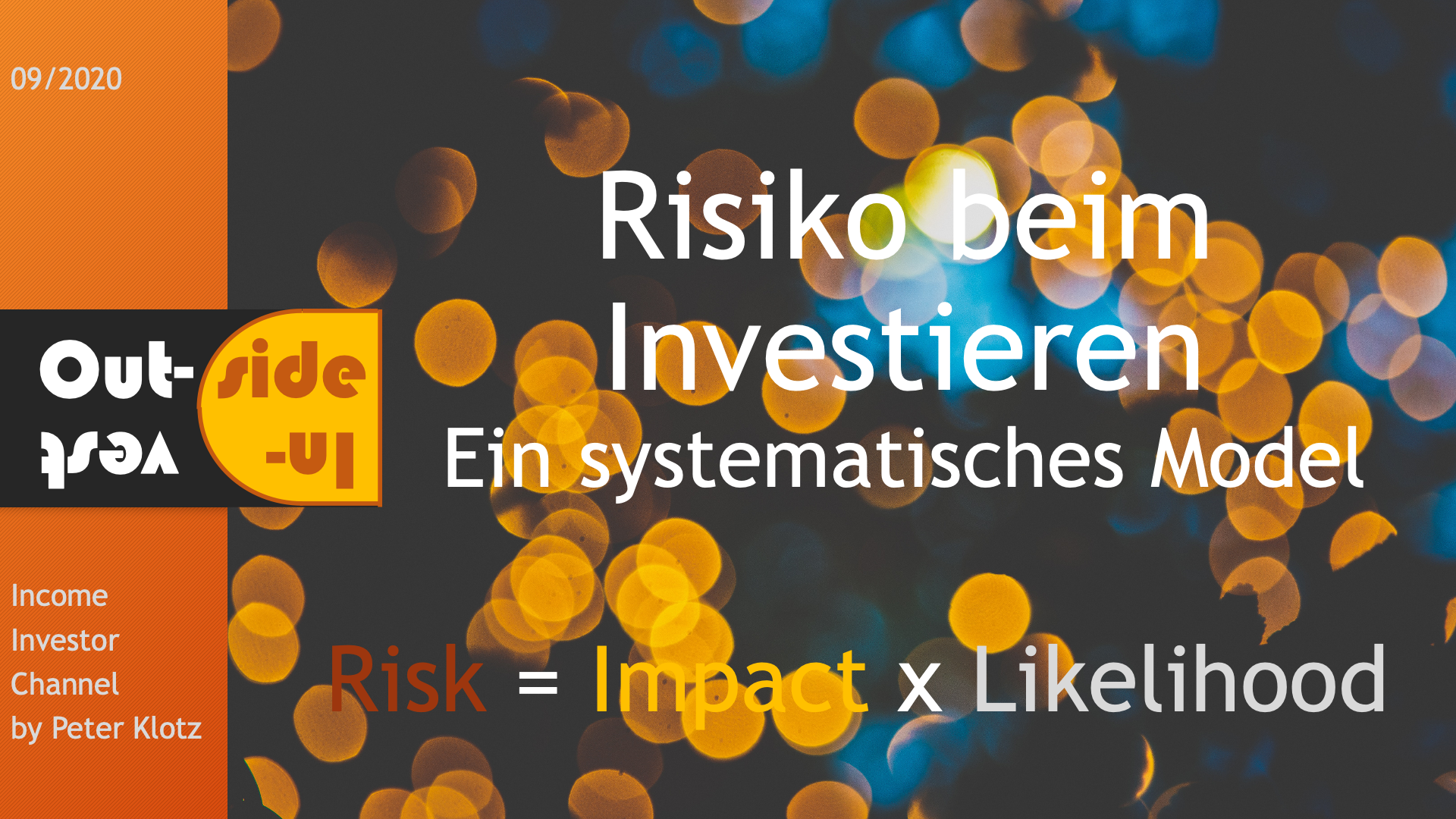Risk is well defined in the world of finance, usually as the probability of a loss event or historical volatility. Probability is the likelihood of the event. Volatility has the aspect of an amount of loss. The problem is, one cannot consider just the one or the other. Instead ISO 31000, a standard for risk management, as used in IT security or project management defines risk as
risk = impact x likelihood
(ISO 31000)
where likelihood is the probability of the loss and impact is the size of the loss. One could now make a complicated quantitative risk model based on this, but a rough set of categories should be enough for private investors.
So we define impact and likelihood each with 4 levels with example:
| 1 | critical | leveraged losses larger than 100% |
| 2 | severe | Total loss of capital |
| 3 | medium | Temporary losses during a crash |
| 4 | low | Underperformance |
And likelihood also with 4 levels and example:
| 1 | probably | normal volatility |
| 2 | very likely | Seasonal variations |
| 3 | likely | Trends, bull vs. bear markets |
| 4 | unlikely | Black swans |
So when looking a certain investment vehicle one can roughly calculate the risk factor as likelihood number multiplied with impact number, which results in a risk factor between 1 and 16.
The nice effect is that one can build a risk acceptance matrix where one can with color mark those risk factors that one can carry (green) and those that one does not want to accept (red).
| 4 | 8 | 12 | 16 |
| 3 | 6 | 9 | 12 |
| 2 | 4 | 6 | 8 |
| 1 | 2 | 3 | 4 |
So suppose, everything up until 4 is super, until 9 is acceptable for you and everything above that is a no-go. Now when you determine the risk of a investment instrument, you can determine for yourself, wether to use this investment or not. Of course the judgement of impact and likelihood is not completely objective but rather a bit subjective. But in the end better than having no risk model at all and better simple than too complicated, just good enough.
Now one should not only look at risk, as banks and insurances do. Where there is risk there should also be a chance. Unfortunately in this direction this is not automatically true, whereas one can always say that every chance has a risk but not vice versa. In the one direction from chance to risk there is a nearly causal relation in the other one not.
So we can extend our risk model by a chance model like so:
chance = opportunity x likelihood
(extension by the author)
where we make a simple categorization of opportunity with our 4 levels and examples as such:
| 1 | neglectible | underperformance |
| 2 | normal | market standard |
| 3 | considerable | outperformance |
| 4 | huge | tenbagger, leveraged wins |
And of course we can extend our risk matrix to a risk/chance matrix
| 4 | 8 | 12 | 16 |
| 3 | 6 | 9 | 12 |
| 2 | 4 | 6 | 8 |
| 1 | 2 | 3 | 4 |
| 1 | 2 | 3 | 4 |
| 2 | 4 | 6 | 8 |
| 3 | 6 | 9 | 12 |
| 4 | 8 | 12 | 16 |
Marking in this matrix again the acceptable risk and the acceptable chance is helpful to determine not only what risk should be avoided but also what chance is the minimum one wants to reach.
There is though a problem, of course one would like to have a high chance with a low risk, but this does not exist. But what exists, is a high risk with a low chance, that’s call bad business. The normal case is that with a high chance comes a high risk and with a low risk comes a low chance, unfortunately. So the investor needs to look for an investment that has both an acceptable chance but also an acceptable risk, so usually somewhere in the middle.
The good thing is though, that when there is risk, there is usually a way to mitigate this risk and where is a chance there is a way to foster this chance.
What’s important is that an investor uses a risk- and chance-based mental model and the systematic model presented here should serve as a simple, yet powerful such way of thinking to analyse a investment upfront.
For example see the video and hope that this proves to be useful.

Comments are closed